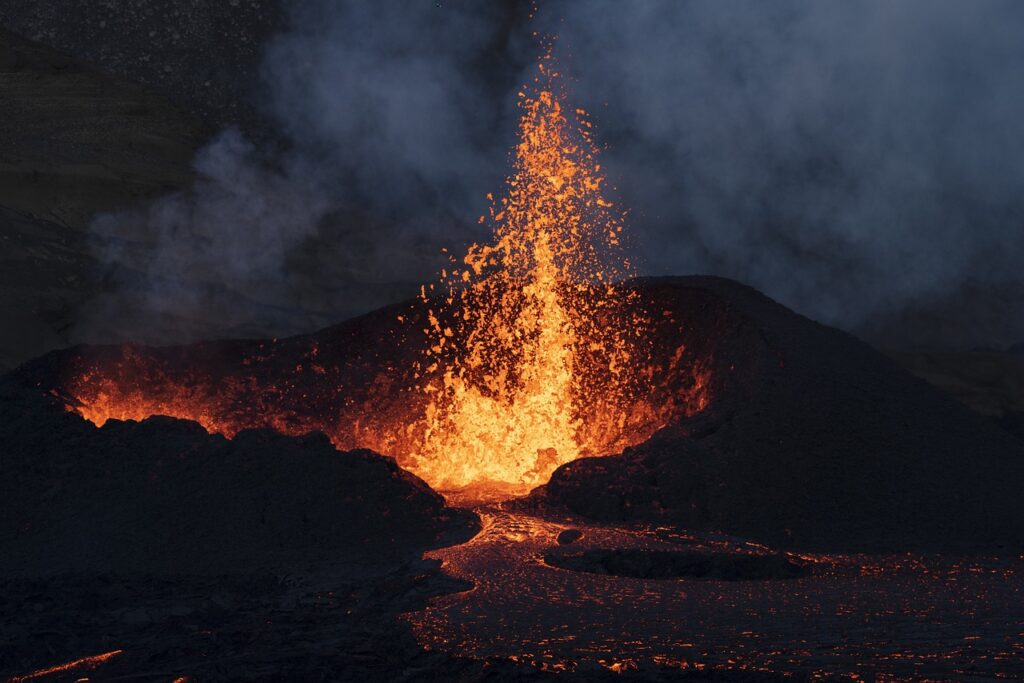Mount Etna, Europe’s tallest and most active volcano, is erupting again. This event has drawn attention from tourists and locals in Sicily. The eruption began on February 11 and has been producing lava and ash. Plumes of smoke rise high into the sky, creating a spectacular scene.
The eruption originates from the southeast crater, known as Bocca Nuova, or “new mouth.” Lava has flowed for about three kilometers. Unlike past eruptions, this one has caused little disruption. No major damage has been reported, and daily life continues. Tourists and residents are still able to explore the volcano, following safety rules set by local authorities.
Is Catania Airport Affected?
Catania–Fontanarossa Airport is close to Mount Etna. Many travelers arriving in Sicily get a clear view of the volcanic activity. On February 12, some parts of the airport were briefly closed. Volcanic ash reduced visibility, making it unsafe for some flights to operate. However, normal flight operations soon resumed.
Passengers planning to travel should check flight statuses before heading to the airport. Airlines update their websites and apps with real-time information. It is also a good idea to monitor emails and social media for any sudden changes.
Flight Disruptions: Can Travelers Get Compensation?
When flights are delayed or canceled due to natural disasters, airline policies vary. Many airlines provide refunds or alternative flights if there is a major disruption. However, volcanic eruptions are usually considered “extraordinary circumstances.” This means that airlines are not required to offer compensation beyond refunds or rebooking.
For added protection, travelers are encouraged to buy travel insurance. Many insurance providers cover natural disasters, helping to recover costs from flight changes, hotel stays, and other unexpected expenses.
Is Sicily Safe During the Eruption?
Yes, it remains safe to visit Sicily even during Mount Etna’s eruption. The volcano erupts multiple times a year, and authorities have well-developed safety plans. Roads, towns, and major tourist sites are mostly unaffected. Life continues as usual, with only minor precautions in place.
Local officials closely monitor the situation. They issue warnings when necessary and restrict access to dangerous areas. Visitors should follow their guidance to stay safe.
Exploring Mount Etna During the Eruption
Hiking on Mount Etna is still possible, even during eruptions. However, specific rules must be followed. To hike beyond a certain altitude, travelers must join a qualified mountain guide. This rule helps ensure that visitors stay safe while enjoying the unique experience of an active volcano.
Many guided tours offer a safe and exciting way to see the lava flows. Tourists can explore the landscape while learning about the volcano’s history and geology. Even from a distance, the glowing lava and smoke create unforgettable views.
Mount Etna: Europe’s Most Active Volcano
Mount Etna sits on the eastern coast of Sicily. It is one of the world’s most studied volcanoes. Despite its frequent eruptions, lava has not reached populated areas since the 1800s. The volcano has over 200 craters, and black ash often falls on surrounding areas, including Catania.
Scientists constantly monitor Etna’s activity. The data collected helps predict future eruptions and improve safety measures. Researchers say this latest eruption follows a normal pattern, with no immediate threats to people living nearby.
Tourism and Economic Impact
Tourism remains strong despite the eruption. Visitors from around the world come to see Mount Etna in action. Hotels, restaurants, and tour operators continue to serve guests as usual.
Many local businesses depend on tourism. Volcano-related attractions bring in millions of euros each year. Tour operators report an increase in bookings, as many travelers want to witness the eruption firsthand.
Past Eruptions and Lessons Learned
Mount Etna has erupted many times throughout history. Some eruptions have been more destructive than others. In 2002, a large eruption damaged a ski resort and some buildings. However, strict safety measures have helped reduce the impact of more recent eruptions.
Authorities now use drones, satellites, and seismic sensors to track volcanic activity. These tools provide early warnings, helping to prevent serious consequences.
Mount Etna’s latest eruption has created a stunning natural display. While it has caused some minor travel disruptions, daily life in Sicily remains largely unaffected. Tourists can still visit, as long as they follow safety guidelines.
Travelers should check for updates on flights and local conditions. Those planning to explore the volcano should join guided tours to ensure safety. With proper precautions, visitors can witness one of nature’s most incredible spectacles.
For more updates on this event and other global news, visit Financial Mirror.
